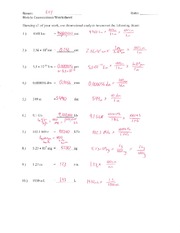Chemistry 12mr. B. Quast's Websitemount Douglas Secondary
- Chemistry 12mr. B. Quast's Website Mount Douglas Secondary Research
- Chemistry 12mr. B. Quast's Website Mount Douglas Secondary School
Chemistry 12mr. B. Quast's Website Mount Douglas Secondary Research

Chemistry 12mr. B. Quast's Website Mount Douglas Secondary School


Unit 1: Atomic Theory
Summary of Quantum Numbers Principal quantum number, n: the main electron energy levels or shells (n) | Secondary quantum number, l: the electron sublevels or subshells; tells you orbital shape (0 to n-1) | Magnetic quantum number, ml : the orbital orientation of a sublevel (-l to +l) | Spin quantum number, ms : the electron spin (+1/2 or -1/2) | 1 | 0 | 0 | +1/2, -1/2 | 2 | 01 | 0-1,0,+1 | +1/2, -1/2+1/2, -1/2 | 3 | 012 | 0-1,0,+1-2,-1, 0, +1, +2 | +1/2, -1/2+1/2, -1/2+1/2, -1/2 |
Energy Level Diagrams:
Pauli exlusion principle: no two electrons in an atom can have the same four quantum numbers; no two electrons in the same atomic orbital can have the same spin
Aufbau principle: each electron is…show more content…
Example (p 220 #12): Write a complete ground-state electron configuration for each of the following atoms or ions (a) Mg (d) Rb
(b) S2- (e) Au
(c) K+
Example (p220 # 13): Write the shorthand electron configuration for each of the following atoms or ions (a) Yttrium
(b) Antimony
(c) Barium ion
Example (p220 #15): Identify the following atoms or ions from their electron configurations (a) W: 1s22s22p63s23p64s23d104p3
(b) X+: 1s22s22p63s23p64s23d104p6
(c) Y -: 1s22s22p63s23p64s23d104p65s24d105p6
(d) Z: 1s22s22p63s23p64s23d104p65s24d105p66s24f 11
Procedure for Drawing Lewis Structures: 1. Arrange atoms symmetrically around the central atoms (usually listen first in the formula, not usually oxygen and never hydrogen) 2. Count the number of valence electrons of all atoms 3. Place a bonding pair of electrons between the central atom and each of the surrounding atoms 4. Complete the octets o the surrounding atoms using lone pairs of electrons. Any remaining electrons go on the central atom 5. If the central atom does not have an octet, move lone pairs from the surrounding atoms to form double or triple bonds until the central atom has a complete octet 6. Draw the Lewis structure
Example: Draw a Lewis symbol for each of the following (a) CCl4 (b) PCl3 (c) H2O (d) NH3
Valence Bond Theory: *
Summary of Quantum Numbers Principal quantum number, n: the main electron energy levels or shells (n) | Secondary quantum number, l: the electron sublevels or subshells; tells you orbital shape (0 to n-1) | Magnetic quantum number, ml : the orbital orientation of a sublevel (-l to +l) | Spin quantum number, ms : the electron spin (+1/2 or -1/2) | 1 | 0 | 0 | +1/2, -1/2 | 2 | 01 | 0-1,0,+1 | +1/2, -1/2+1/2, -1/2 | 3 | 012 | 0-1,0,+1-2,-1, 0, +1, +2 | +1/2, -1/2+1/2, -1/2+1/2, -1/2 |
Energy Level Diagrams:
Pauli exlusion principle: no two electrons in an atom can have the same four quantum numbers; no two electrons in the same atomic orbital can have the same spin
Aufbau principle: each electron is…show more content…
Example (p 220 #12): Write a complete ground-state electron configuration for each of the following atoms or ions (a) Mg (d) Rb
(b) S2- (e) Au
(c) K+
Example (p220 # 13): Write the shorthand electron configuration for each of the following atoms or ions (a) Yttrium
(b) Antimony
(c) Barium ion
Example (p220 #15): Identify the following atoms or ions from their electron configurations (a) W: 1s22s22p63s23p64s23d104p3
(b) X+: 1s22s22p63s23p64s23d104p6
(c) Y -: 1s22s22p63s23p64s23d104p65s24d105p6
(d) Z: 1s22s22p63s23p64s23d104p65s24d105p66s24f 11
Procedure for Drawing Lewis Structures: 1. Arrange atoms symmetrically around the central atoms (usually listen first in the formula, not usually oxygen and never hydrogen) 2. Count the number of valence electrons of all atoms 3. Place a bonding pair of electrons between the central atom and each of the surrounding atoms 4. Complete the octets o the surrounding atoms using lone pairs of electrons. Any remaining electrons go on the central atom 5. If the central atom does not have an octet, move lone pairs from the surrounding atoms to form double or triple bonds until the central atom has a complete octet 6. Draw the Lewis structure
Example: Draw a Lewis symbol for each of the following (a) CCl4 (b) PCl3 (c) H2O (d) NH3
Valence Bond Theory: *

Chemistry Notes for class 12 Chapter 1 The Solid State Solids Solids are the chemical substances which are characterised by define shape and volume, rigidity, high density, low compressibility. The constituent particles (atoms, molecules or ions) are closely packed and held together by strong interparticle forces Types of Solids. Email: researchhelp@douglascollege.ca Chat: Chat with a Librarian Text: 604-227-3620. Telephone: 236-428-4803.

